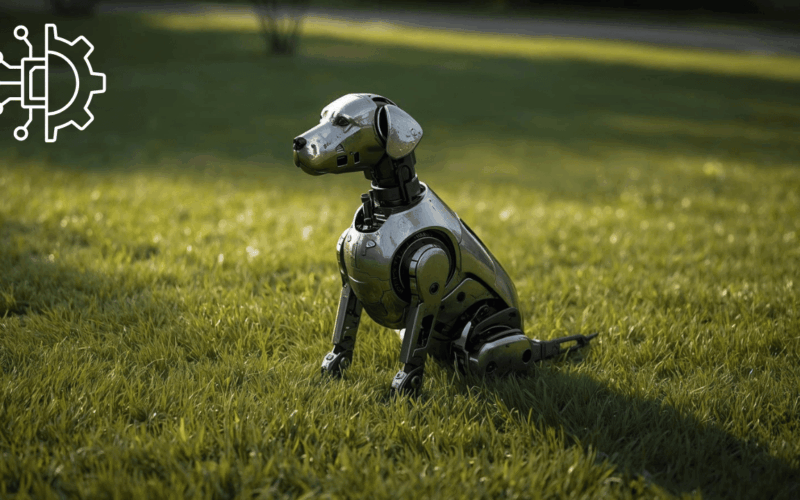Agentic AI is no longer a lab demo. It is a way to get real work done with software that can plan, decide, and act with minimal supervision. These agents write code, run customer operations, control robots, and coordinate with other agents to deliver outcomes that used to require large teams. In this guide, you will learn what agentic AI really is, why it matters for your roadmap, and which five systems are setting the pace right now. You will also see how to evaluate them, where to start, and how to avoid the usual pitfalls. In this article, we’ll explore the agentic AI revolution, the top 5 hottest AI machines, and autonomous systems.
What Agentic AI Means In Practice
Classic AI answers questions. Agentic AI takes that foundation and adds goals, tools, and memory so the system can pursue outcomes over time. The agent plans steps, calls tools like a browser or shell, checks its own work, and adapts when it gets stuck. Reasoning models made this shift possible, since they are trained to think before responding and to adjust strategies within a task.
The Five Hottest Agentic Systems You Should Know
Below are five categories that capture the most useful agentic systems operating today. You will find one for reasoning, one for coding, one for business ops, and two that bridge software with the physical world.
1. Reasoning Models That Orchestrate Complex Tasks: AI Machines Autonomous Systems
Reasoning models serve as brains that plan multi step work. They break a request into subgoals, choose tools, test partial results, and iterate. Think of them as the conductor for your agent stack. These models have shifted expectations for reliability in long tasks and they continue to influence how teams design agent loops.
2. Coding Agents That Build And Ship Software
Coding agents act like junior engineers who never sleep. They can take a ticket, open a plan, run tests, fix failures, and submit a pull request. Well designed coding agents use a full tool chain that includes a shell, code editor, browser, and project trackers so they can operate inside real engineering workflows. Teams adopt coding agents to spike features, refactor legacy corners, and keep test suites healthy without soaking senior time.
3. Business Operations Agents That Work With Customers: AI Machines Autonomous Systems
Contact centers and sales teams now use agentic systems that fetch context, draft responses, and guide the next best action in real time. Companies report sales lifts and shorter handle times when assistants support agents with instant retrieval and suggestions. The lesson is simple. Agents that augment humans can cut call time, raise quality, and turn support moments into revenue moments when you train them on your own knowledge base.
4. Warehouse And Logistics Robots With Foundation Models
In the physical world, robots need flexible perception and planning. Robotics foundation models mix large real world robot datasets with internet scale data to generalize across tasks and products.
The result is higher reliability in messy, high variation environments such as warehouses and returns processing. For operations leaders, this means fewer custom rules and more plug and work behavior as you add new items and flows.
5. Embodied Agents That Learn To Act In New Spaces: AI Machines Autonomous Systems
Embodied agents collect data at scale, learn from it, and then execute tasks in previously unseen settings. The approach blends language, vision, and action so robots can adapt with less hand holding. In parallel, humanoid programs are racing to turn this research into practical labor in factories and homes.
Public showcases have highlighted gait improvements, dexterity, and early deployments on industrial lines. The next wave will focus on reliability and safety as these agents move from demos to daily work with the hottest AI machines.
Comparison Table: Picking The Right Agent For Your Use Case
| Category | Best Fit Use Cases | Core Strength | Maturity Today | Key Risks | Fastest Way To Start |
|---|---|---|---|---|---|
| Reasoning Models | Planning, data analysis, research, verification | Multi step thinking and self correction | High in software tasks | Hallucination if guardrails are weak | Start with a managed API and a small tool set such as retrieval and a calculator |
| Coding Agents | Ticket triage, refactors, test repair, scaffolding | End to end code workflow with tools | Rising fast in teams with clear CI | Misapplied permissions or flaky tests | Connect to a sandbox repo with CI, start on non critical backlog |
| Ops Agents | Customer support guidance, sales assist, internal helpdesk | Uses company knowledge to recommend actions | Proven at scale in contact centers | Outdated knowledge, compliance slips | Pilot on one queue and log every suggestion and outcome |
| Robotics Foundation Models | Pick and place, kitting, returns, mixed SKU handling | Generalizes across messy environments | Mature in warehouses | Edge cases that were not in data | Start with one workcell and measure reliability per SKU |
| Embodied Agents | Mobile manipulation, assembly, service tasks | Learning across perception, language, and action | Rapid progress, still early in homes | Safety, privacy, cost to service | Begin with supervised tasks and strict safety interlocks |
How To Evaluate Agentic Systems Without Burning Time: AI Machines Autonomous Systems
Clarify the job to be done. Pick one outcome that matters this quarter. It might be cutting customer handle time, closing stale bugs, or increasing pick accuracy.
Choose the smallest useful scope. Start with a narrow workflow, not the whole department. Measure cycle time, accuracy, acceptance rate, and handoff quality using hottest AI machines.
Select the control method. Many teams use human in the loop at first. The agent proposes. A human approves. With evidence, you can move to auto approve for low risk cases that meet clear rules.
Instrument the loop. Log every tool call, retrieval source, and decision so you can replay where things went wrong. Add automatic fallbacks such as request a review when confidence is low.
Define your safety rails. Permissions, rate limits, and audit trails are not optional. In robotics, add hard stops, geofences, and safe posture defaults. In customer systems, keep clear rules for data access and disclosure.
Patterns That Separate Wins From Noise
Clear goals beat generic assistants. The best deployments give the agent a single mission and the tools to complete it. Success compounds when you connect a few narrow agents rather than one agent that tries to do everything for hottest AI machines.
Reliable memory improves results. Give agents a clean knowledge base and refresh it on a schedule. Stale context creates bad suggestions and erodes trust.
Feedback loops harden performance. Ask users to rate suggestions with one click. Retrain prompts and tool choices using real misses and wins. This moves performance from acceptable to excellent.
Hybrid teamwork works best. Use a reasoning model as the planner, then delegate tasks to specialized agents. For example, a research planner calls a code agent for scraping, a writer for summaries, and a verifier for citations. Multi agent frameworks make it easier to coordinate multiple agents with roles and guardrails.
Playbooks For Each Category: AI Machines Autonomous Systems
Reasoning Models Agentic AI Revolution
Start with a planning agent that has only three tools. Retrieval for company knowledge, a simple calculator, and structured web search if policy allows it. Add a verifier agent when tasks involve math or policy.
Coding Agents
Wire the agent to a sandbox repository, your task tracker, and test runner. Limit write access to a feature branch. Let the agent propose a plan, run tests, and open a pull request. Keep a human reviewer in the loop until acceptance rates are stable.
Agentic AI Revolution Ops Agents
Connect the agent to your knowledge articles and recent tickets. Begin on a low risk queue such as billing questions or order status. Measure handle time, containment rate, and customer satisfaction. Expand to sales assist once accuracy is consistent.
Robotics Foundation Models
Pick one station such as decanting or returns. Feed real SKU variety to stress generalization. Track picks per hour, error rate, and recovery time. The goal is a reliable baseline with fewer hand tuned rules than your current system.
Embodied Agents: Agentic AI Revolution
Pilot in controlled spaces with clear tasks such as machine tending or tote moves. Use a curriculum of tasks that grow in difficulty. Keep an operator ready to intervene while data and policies mature.
Cost, Risk, And Value
Agentic systems change your cost structure. They reduce repetitive human effort and increase the leverage of your experts. Coding agents make senior engineers more effective by absorbing low level tasks. Ops agents raise the ceiling on service quality without a straight line growth in headcount.
Robotics agents convert capital into steady throughput while the software learns from real work. The risks are real. Bad memory can produce wrong answers. Weak guardrails can trigger unwanted actions. In robotics, safety and privacy need first class attention. The teams that win treat these as design constraints, not afterthoughts.
Where This Is Going Next
Three shifts will define the next year. First, native reasoning will become the default for high end models, which will lift the floor on agent reliability. Second, multi agent orchestration will look more like a production workflow engine, with reusable roles, typed messages, and verification stages agentic AI revolution.
Third, physical agents will enter more factories and stores as foundation models reduce custom integration. Expect more case studies in customer operations and more visible proofs from warehouse and humanoid programs as leaders push from pilot to scale.
Hottest AI Machines: A Simple Action Plan
Pick one category from the table that maps to a pressing business goal. Create a two week pilot with a success metric that fits the job.
Give the agent tight bounds, strong guardrails, and a fast feedback loop. Review the results, expand the scope by one notch, and repeat. With this rhythm, you get value quickly and build real capability rather than collecting demos.








